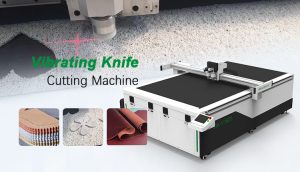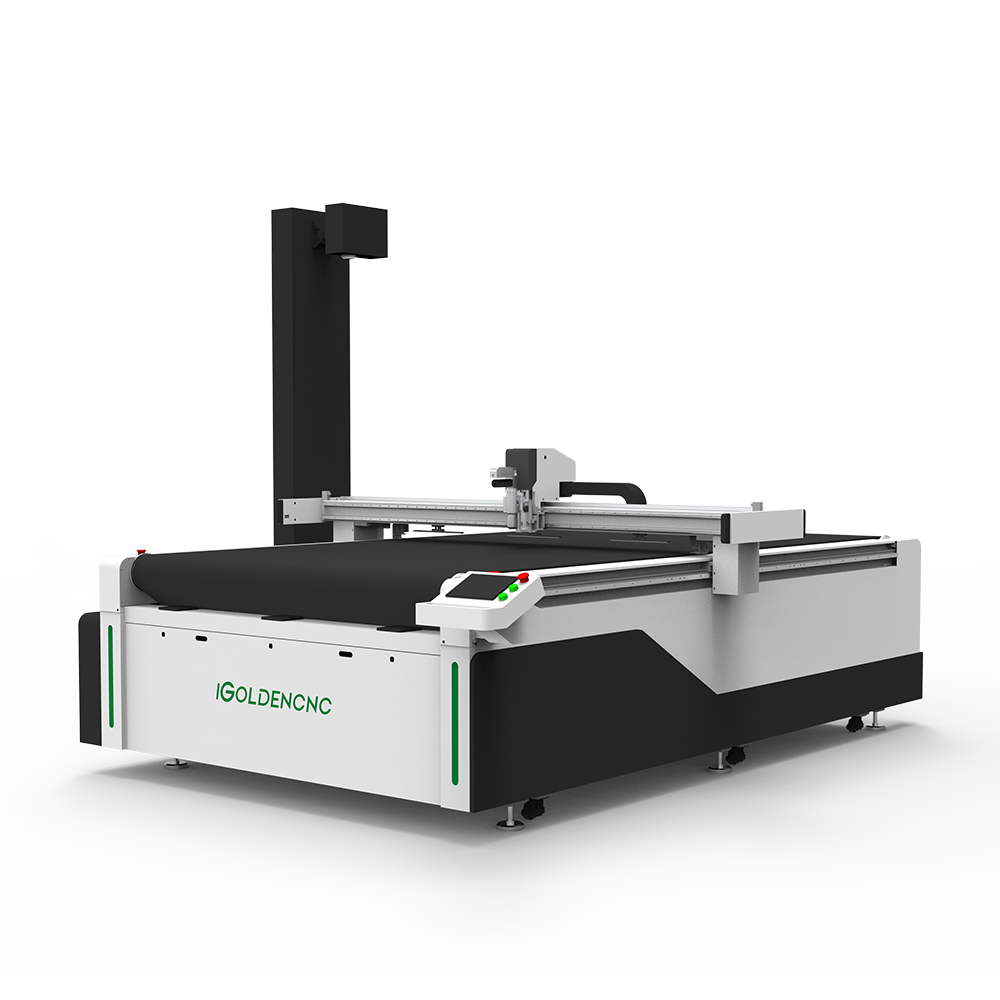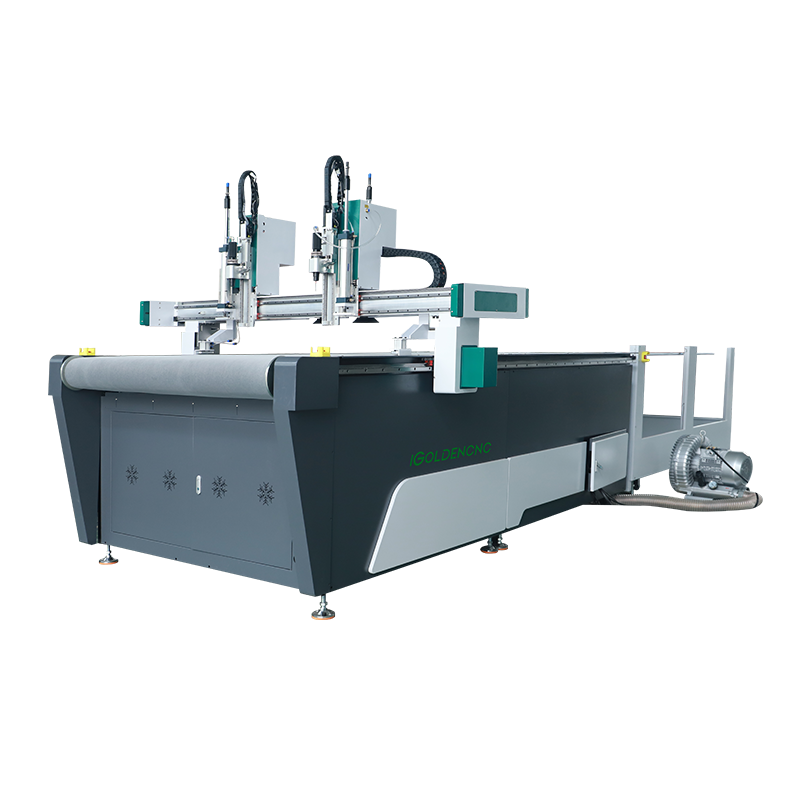Blog
Vibration knife cutting: the ultimate solution to make flexible material cutting more perfect
In the field of flexible material processing, traditional cutting technology often faces problems such as material deformation, edge burrs, and low efficiency. Whether it is textile fabrics, elastic foam, or ultra-thin films, how to achieve efficient, accurate, and non-destructive cutting has always been a pain point in the industry. Vibration knife cutting technology, with its unique principle and intelligent design, is redefining the precision and efficiency of flexible material processing. This article will deeply analyze the working principle, cutting process, and core advantages of the vibration knife, and guide you on how to choose the matching equipment, while revealing its successful application in various industries.
1. Vibration knife cutting principle: high-frequency micro-vibration, “soft” to overcome rigidity
The core of the vibration knife lies in high-frequency micro-vibration cutting technology:
Physical mechanism: The knife head vibrates at a high frequency of hundreds to thousands of times per second (usually 20,000-40,000 times/minute), combined with downward vertical pressure, to achieve “point-touch” cutting.
Energy control: The kinetic energy generated by the vibration is concentrated at the tip of the knife, penetrating the material with a very small contact area, avoiding the pulling of traditional mechanical blades or thermal damage from lasers.
Intelligent adjustment: Real-time monitoring of material resistance through sensors, automatic adjustment of vibration frequency and pressure, ensuring that flexible materials of different hardness and thickness can be perfectly cut.
2. How does the vibration knife cut flexible materials? 5 steps to reveal the process
Digital import: Directly transfer the CAD design file to the vibration knife control system to automatically generate the cutting path.
Material fixation: Use a vacuum adsorption table or flexible fixture to stabilize the material to prevent displacement or wrinkles during cutting.
Intelligent parameter matching: The equipment automatically selects the vibration frequ
ency, cutting speed and pressure according to the material properties (such as thickness, elastic modulus
).
Precise cutting: The knife head vibrates along the predetermined path at high frequency, and the synchr
onous dust collection system removes debris to ensure the cleanliness of the working surface.
Finished product sorting: After cutting, the robot arm or conveyor belt automatically collects the material to achieve unmanned operation of the entire process.
3. 4 core advantages of vibration knife cutting flexible materials

Zero thermal damage, smooth edges like mirrors
The heat source-free design completely eliminates the problems of burning and melting edges caused by laser carb
onization or blade friction, especially suitable for heat-sensitive materials such as TPU, silicone, and EVA.
The cutting edge is smooth and burr-free, and can be directly used for high-end products (such as medical dressings and luxury leather).
Adapt to material deformation and refuse stretching deformation
High-frequency vibration reduces cutting resistance, avoids the pulling of elastic materials by traditional blades, and ensures that high-rebound foam, elastic fabrics, etc. maintain their original shape.
Case: When a sports shoe manufacturer cuts 3D flying woven fabrics, the size error is reduced from ±1.5mm to ±0.2mm.
One knife is compatible with hundreds of materials, reducing costs and increasing efficiency
From 0.1mm ultra-thin breathable film to 50mm thick sponge, one knife can penetrate, without frequent tool changes or equipment adjustments.
Supports 300+ material switching, and a single device can meet the production needs of multiple categories.
Intelligent and efficient, small batches can also be profitable
Digital files are directly connected to the device, and production changes are completed within 10 minutes, which is suitable for customized orders (such as personalized car seat cutting).
The energy consumption is only 1/3 of traditional laser equipment, and the comprehensive operation and maintenance costs are reduced by more than 40%.
4. How to choose the right vibration knife equipment? 5 key indicators
Material type and thickness:
Ultra-thin materials (<1mm) require high-precision servo motors + micro-amplitude blades; thick materials (>30mm) require high-power vibration modules.
Production requirements:
Multi-blade linkage models are preferred for large-scale production; single-head + fast mold change system is optional for small-scale flexible production.
Cutting accuracy requirements:
High-end medical and aerospace fields require ±0.05mm accuracy; ordinary industrial products can be relaxed to ±0.1mm to reduce costs.
Degree of intelligence:
Essential functions: autofocus, material thickness detection, AI path optimization; optional 3D visual positioning system.
Brand and service:
Choose suppliers that provide free trial cutting, process training and localized technical support to avoid after-sales blind spots.
5. Industry applications of vibration knife cutting: from clothing to aerospace
Textiles and clothing:
Precisely cut elastic lace and seamless underwear sponge pads to avoid fabric shedding.
Shoes and sports equipment:
One-time molding of EVA soles and carbon fiber sports protective gear to improve fit and comfort.
Automotive interior:
Cutting leather seats and sound insulation cotton to achieve zero-defect luxury texture.
Medical and packaging:
Aseptic cutting of medical silicone gaskets and breathable Band-Aid substrates.
Aerospace:
Lightweight precision processing of aramid honeycomb panels and carbon fiber prepregs.










